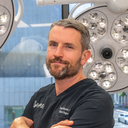Hi, I am wondering if it would be possible to get my nasal hump rasped under local anesthesia? I am 100% set on not doing a full surgery, I would rather live with the bump.
Answers (8)
From board-certified doctors and trusted medical professionals
More Rhinoplasty Questions
See all Rhinoplasty Q&AWE SEND PRETTY
EMAILS
What’s trending? Who’s turning heads? Which TikTok myths need busting? We’ve got you. No fluff, no gatekeeping—just real talk. Get our free, unfiltered newsletter.


